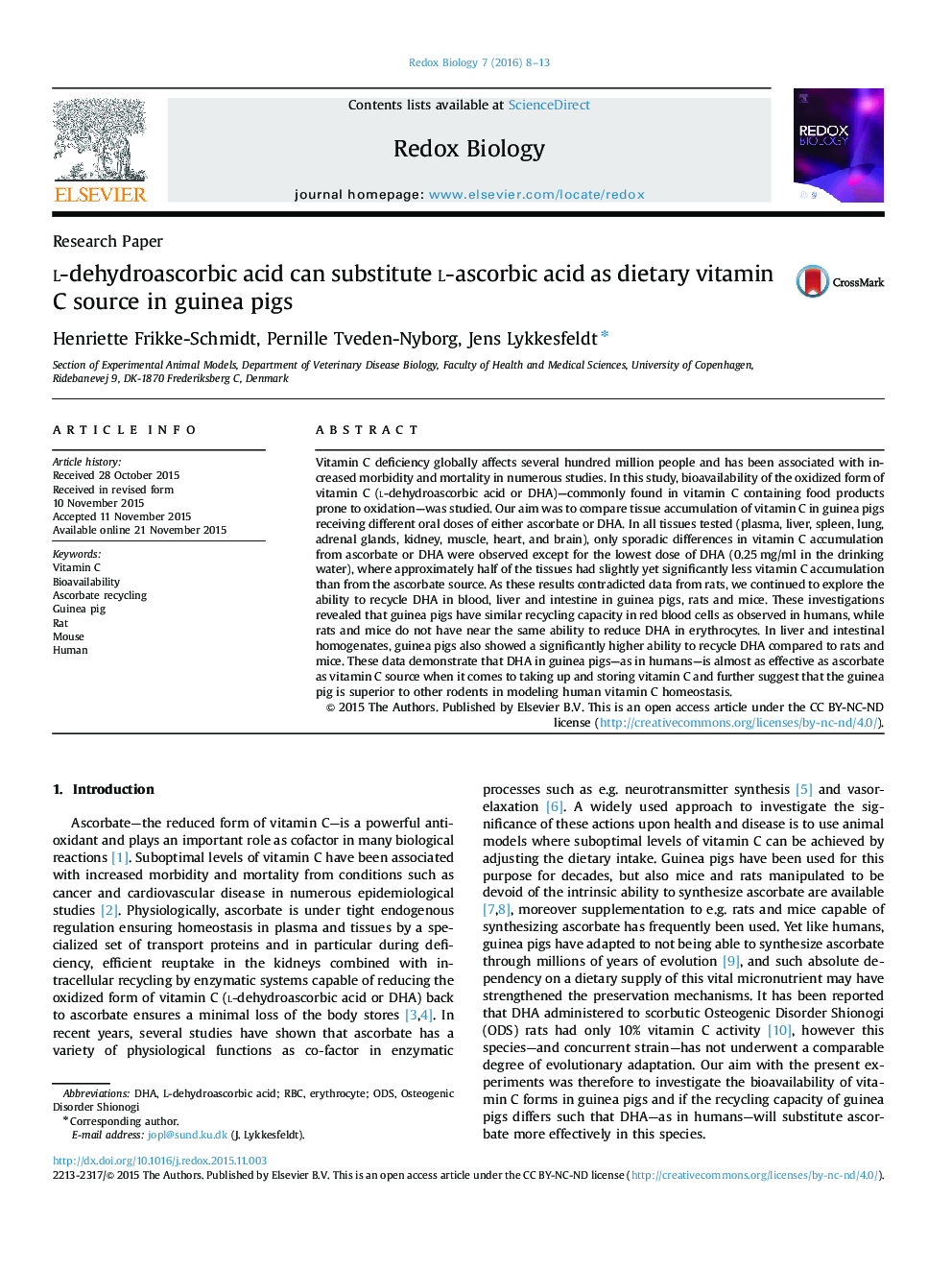| کد مقاله | کد نشریه | سال انتشار | مقاله انگلیسی | نسخه تمام متن |
|---|---|---|---|---|
| 1922830 | 1535843 | 2016 | 6 صفحه PDF | دانلود رایگان |
• Dehydroascorbic acid is an effective vitamin C source in guinea pigs.
• Like in humans, efficient recycling of vitamin C has evolved in guinea pigs.
• The guinea pig is a better model of human vitamin C homeostasis than rat and mouse.
Vitamin C deficiency globally affects several hundred million people and has been associated with increased morbidity and mortality in numerous studies. In this study, bioavailability of the oxidized form of vitamin C (l-dehydroascorbic acid or DHA)—commonly found in vitamin C containing food products prone to oxidation—was studied. Our aim was to compare tissue accumulation of vitamin C in guinea pigs receiving different oral doses of either ascorbate or DHA. In all tissues tested (plasma, liver, spleen, lung, adrenal glands, kidney, muscle, heart, and brain), only sporadic differences in vitamin C accumulation from ascorbate or DHA were observed except for the lowest dose of DHA (0.25 mg/ml in the drinking water), where approximately half of the tissues had slightly yet significantly less vitamin C accumulation than from the ascorbate source. As these results contradicted data from rats, we continued to explore the ability to recycle DHA in blood, liver and intestine in guinea pigs, rats and mice. These investigations revealed that guinea pigs have similar recycling capacity in red blood cells as observed in humans, while rats and mice do not have near the same ability to reduce DHA in erythrocytes. In liver and intestinal homogenates, guinea pigs also showed a significantly higher ability to recycle DHA compared to rats and mice. These data demonstrate that DHA in guinea pigs—as in humans—is almost as effective as ascorbate as vitamin C source when it comes to taking up and storing vitamin C and further suggest that the guinea pig is superior to other rodents in modeling human vitamin C homeostasis.
Figure optionsDownload as PowerPoint slide
Journal: Redox Biology - Volume 7, April 2016, Pages 8–13
